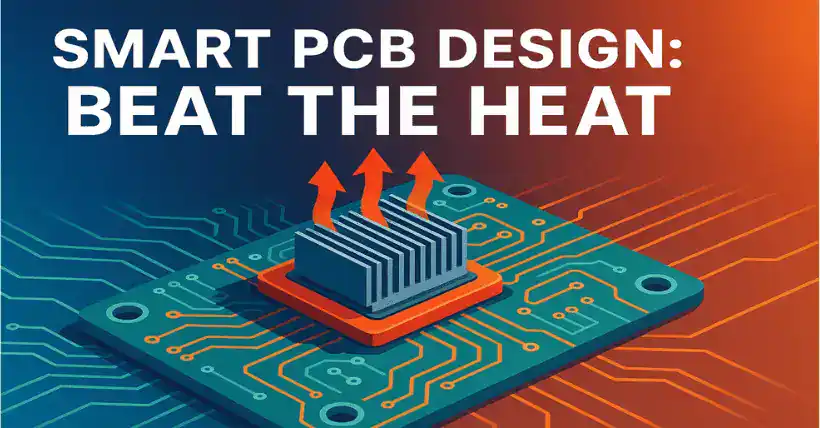As high-performance electronic devices become increasingly miniaturized and highly integrated, how to effectively improve heat dissipation through PCB design has become an essential skill that engineers must master. This article, through multiple practical examples, will guide you step-by-step to grasp the key points of PCB thermal design.
1. Why is PCB thermal design so important?
Modern electronic devices generate heat during operation. If this heat is not dissipated in a timely and effective manner, it can lead to component overheating, which may degrade performance at best or cause damage at worst.
2. Adding thermal copper foil + large-area power/ground copper pour
A simple and effective heat dissipation method is to lay large areas of power or ground copper foil on the PCB. This can quickly spread heat and lower hotspot temperatures.
3. Use of thermal vias — improving three-dimensional heat dissipation efficiency
Thermal vias are important channels that connect the upper and lower copper layers, allowing the heat under the chip to be conducted to the bottom layer for dissipation.
Simulation data shows:
Using a 6×6 thermal via array reduces temperature by about 4.8°C compared to no vias
Temperature difference between top and bottom surfaces drops from 21°C to 5°C
However, reducing the array to 4×4 increases junction temperature by 2.2°C
4. Exposing copper on the back of the IC to reduce thermal resistance
Exposing the copper under the chip reduces thermal resistance between the copper and air, forming a more efficient thermal pathway.
5. Scientifically rational PCB component layout
A proper layout is key to achieving good heat dissipation. The following suggestions are worth referencing for engineers:
Practical advice checklist:
- Place heat-sensitive components near the cool air inlet
- Place temperature sensors at the hottest points
- Position high-power components near the PCB edge/top as much as possible
- Divide the board into zones based on component heat generation
- Pay attention to airflow paths to avoid heat accumulation
- Avoid placing heat-generating components near corners unless equipped with dedicated cooling systems
6. Component spacing also affects heat dissipation!
Proper spacing between components can improve air convection efficiency and prevent “hotspot effects.”
7. Summary: Golden strategies for PCB thermal design
- Lay more copper, especially on ground and power layers
- Add thermal vias to form a 3D thermal channel
- Use exposed copper design at the chip bottom
- Arrange components logically, in line with airflow direction
- Pay attention to component spacing to prevent heat buildup
Don’t forget: Thermal design is not the final step—it should run through the entire PCB design process!

Disclaimer:
- This channel does not make any representations or warranties regarding the availability, accuracy, timeliness, effectiveness, or completeness of any information posted. It hereby disclaims any liability or consequences arising from the use of the information.
- This channel is non-commercial and non-profit. The re-posted content does not signify endorsement of its views or responsibility for its authenticity. It does not intend to constitute any other guidance. This channel is not liable for any inaccuracies or errors in the re-posted or published information, directly or indirectly.
- Some data, materials, text, images, etc., used in this channel are sourced from the internet, and all reposts are duly credited to their sources. If you discover any work that infringes on your intellectual property rights or personal legal interests, please contact us, and we will promptly modify or remove it.



